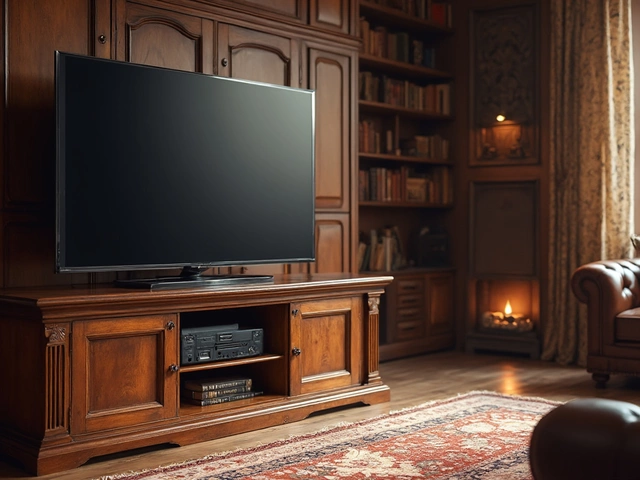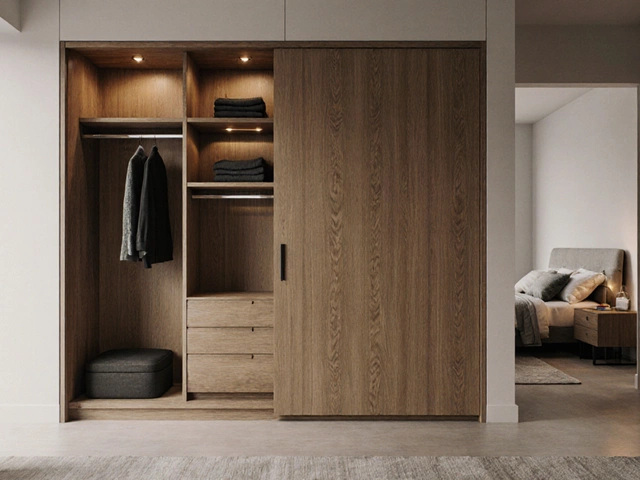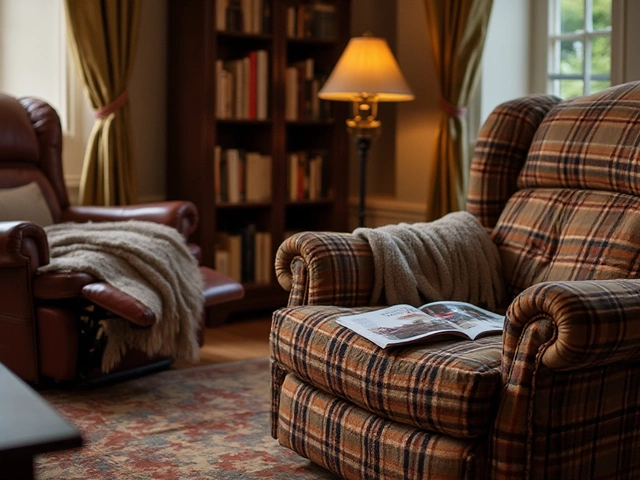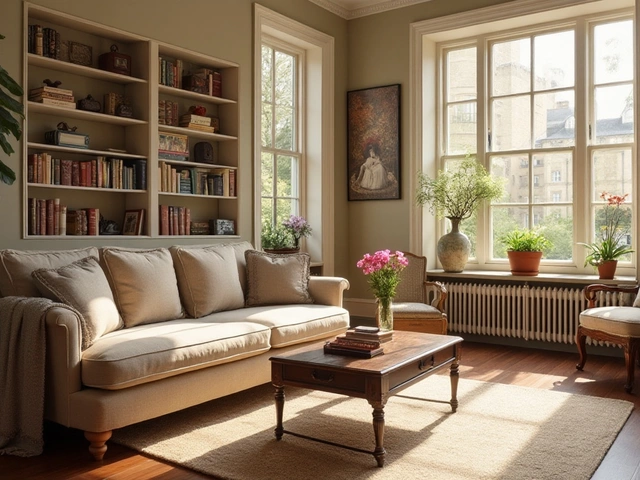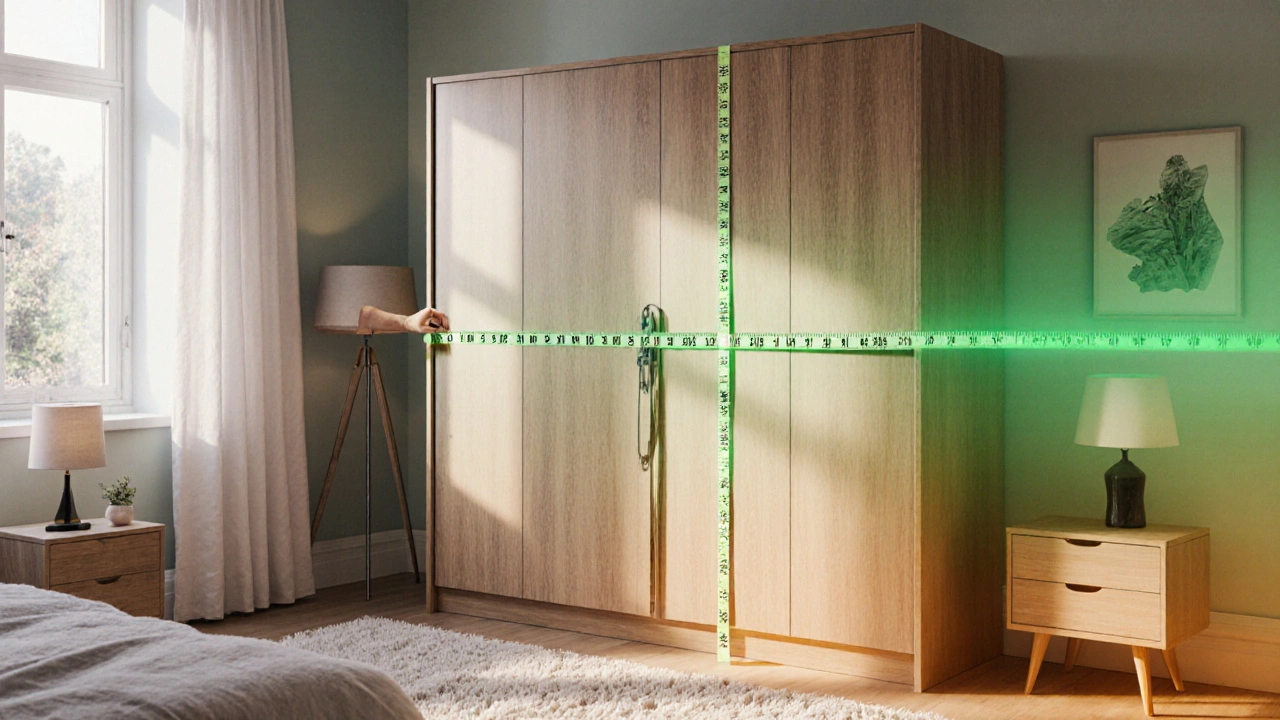 15
Oct,2025
15
Oct,2025
Wardrobe Budget Calculator
Calculate Your Wardrobe Budget
Estimate your wardrobe cost based on your room measurements and material choices.
Your Estimated Budget
$0
When you start thinking about a new Wardrobe is a freestanding storage unit designed to hold clothes, shoes and accessories, often featuring doors, drawers and hanging rods. A wardrobe helps organize your closet space while adding style to a bedroom or dressing area, the first question is how much you should actually spend.
Key Takeaways
- Average cost ranges: $300‑$800 for a basic piece, $800‑$2,000 for mid‑range, $2,000+ for premium.
- Material, door style, and finishing drive price differences more than size alone.
- Plan your budget around "cost per linear foot" to compare sizes fairly.
- Combine sales, outlet stores, and DIY tweaks to stretch a tight wardrobe budget.
- Avoid extra costs by measuring your space accurately before you buy.
What Determines the Cost of a Wardrobe?
Before you set a number, understand the variables that affect price:
- Material: Solid wood (oak, maple) is the priciest, followed by engineered options like MDF or particle board. Laminate finishes sit at the low end.
- Construction style: Modular wardrobes let you add sections later, often costing slightly more per unit but saving money in the long run.
- Door mechanism: Sliding door wardrobes demand hardware and precision, pushing price up versus hinged doors.
- Finish and hardware: Exotic veneers, brass handles, or soft‑close drawers add $50‑$200 each.
- Size and configuration: A wide, tall unit uses more material; measuring "linear foot" (width) helps you compare apples to apples.
Step‑by‑Step: Setting a Realistic Wardrobe Budget
- Measure the opening: Record width, height, and depth. Subtract at least 1‑2 inches for clearance.
- Define your must‑haves: Do you need a hanging rod, shoe shelves, or built‑in lighting?
- Choose a material tier: Low - MDF/laminate; Mid - plywood or veneer; High - solid hardwood.
- Calculate "cost per linear foot": Divide the total price of a comparable model by its width in feet. Aim for $150‑$250 per foot for budget‑friendly options.
- Add 10‑15% for delivery and installation unless you plan a DIY assembly.
- Set a hard ceiling and a flexible buffer (e.g., $250 buffer for unexpected accessories).
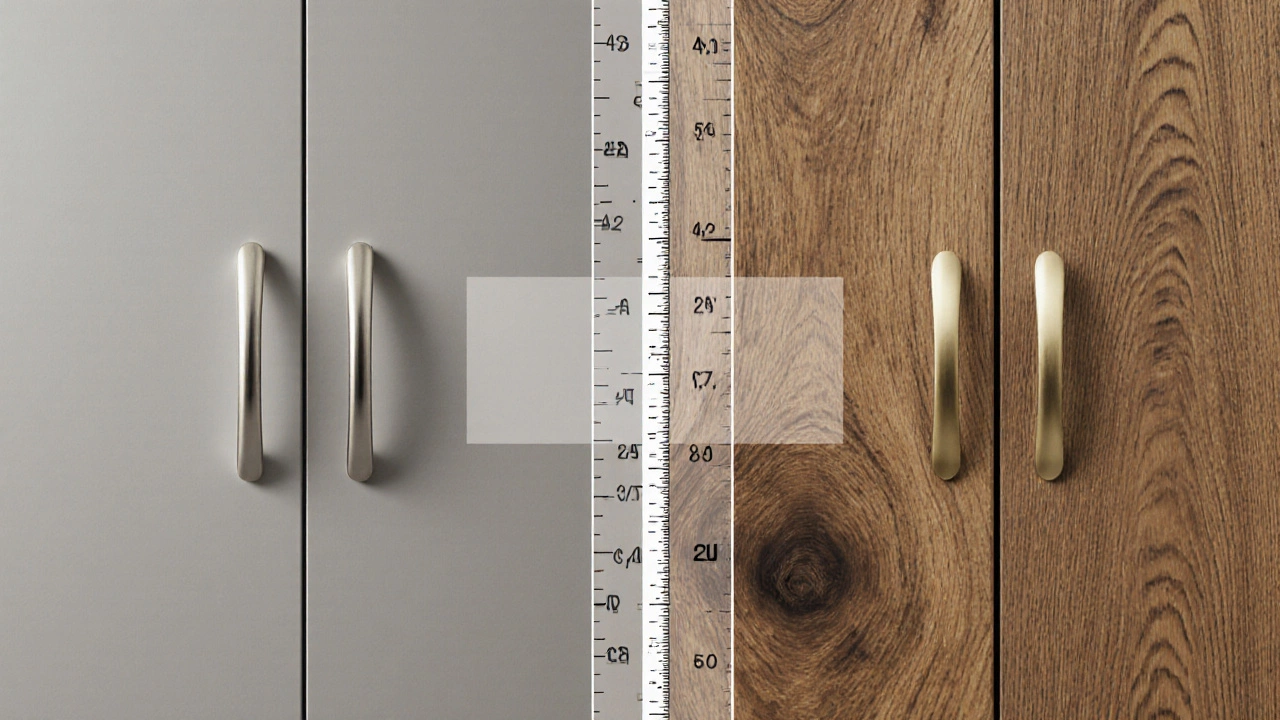
Materials and Their Price Impact
Here’s a quick snapshot of the most common materials you’ll encounter:
- MDF (Medium‑density fibreboard): Cheapest, smooth surface, good for painted finishes. Expect $30‑$45 per square foot.
- Laminate: Thin plastic coating over MDF or particle board. Resistant to scratches, $35‑$55 per square foot.
- Plywood/Particle‑board veneer: Mid‑range, better strength than plain MDF. $55‑$80 per square foot.
- Solid wood (oak, walnut, maple): Premium feel, natural grain, costly. $90‑$150 per square foot.
Choosing a lower‑cost material doesn’t mean you have to sacrifice style. A well‑painted MDF wardrobe with sleek hardware can look as elegant as a solid‑wood piece for a fraction of the price.
Where to Shop: Furniture Store vs. Online Retailer
Both channels have pros and cons. Physical Furniture store lets you feel the finish, test the doors, and get immediate advice. However, showroom prices usually include a markup of 15‑30%.
Online retailers-think Wayfair, IKEA, or specialty sites-often list lower base prices and run seasonal sales. The trade‑off is you’ll rely on product photos and customer reviews. Shipping fees can add $50‑$150, but many sites offer free delivery over a certain amount.
Tips for getting the best deal:
- Sign up for newsletters; you’ll get early access to clearance events.
- Check outlet sections or “open‑box” listings for minor blemishes at 20‑40% off.
- Use price‑comparison tools that factor in shipping and assembly.
Budget Tiers at a Glance
| Tier | Typical Price Range | Material | Door Style | Key Features |
|---|---|---|---|---|
| Entry‑Level | $300‑$800 | MDF or Laminate | Hinged | Basic hanging rod, fixed shelves, paint‑ready finish |
| Mid‑Range | $800‑$2,000 | Plywood veneer or engineered wood | Sliding or hinged with soft‑close | Adjustable interior, upgraded hardware, optional lighting |
| Premium | $2,000+ | Solid hardwood | Custom sliding, mirrored doors, soft‑close | Built‑in shoe racks, integrated lighting, bespoke finishes |
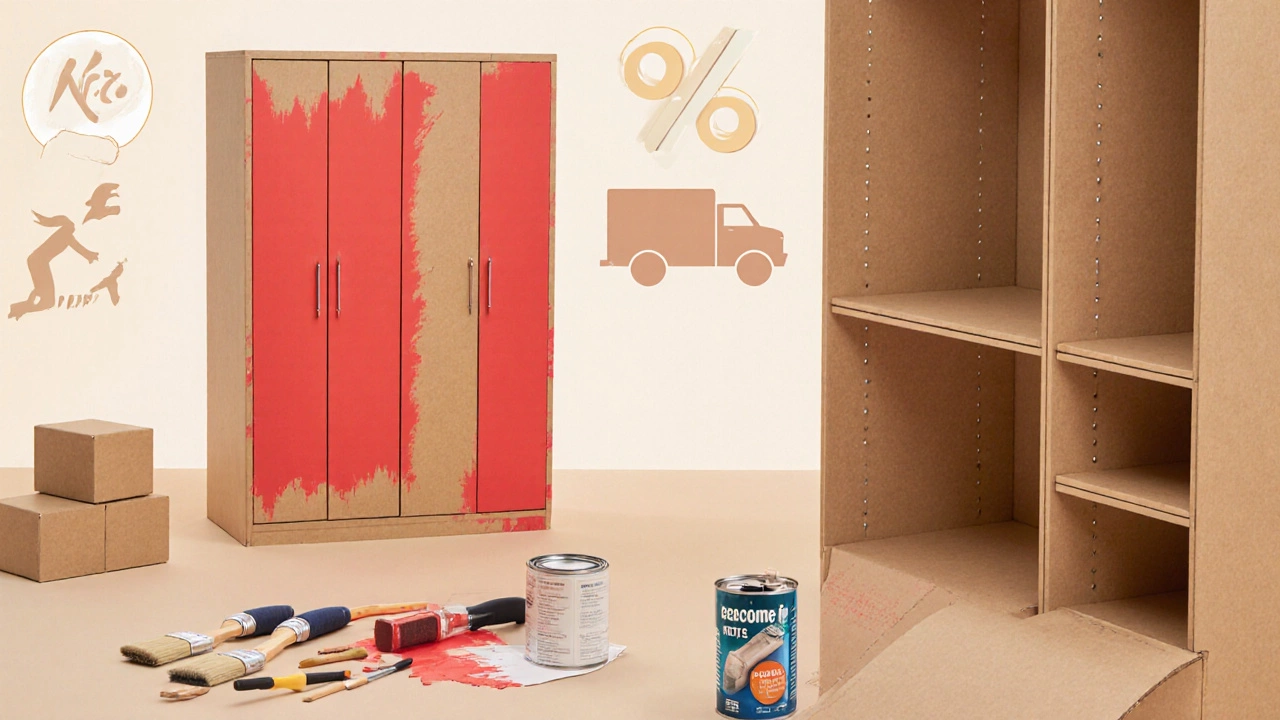
Pro Tips to Stretch Your Wardrobe Budget
- DIY finishes: Buy a plain MDF unit and paint or stain it yourself. A fresh coat can add $50‑$100 in materials but save $200‑$400 on labor.
- Reuse existing hardware: If you have drawer pulls from a previous piece, repurpose them.
- Combine pieces: Pair a tall wardrobe with a shorter chest of drawers for a custom look at a lower total cost.
- Seasonal sales: Look for Black Friday, end‑of‑summer clearance, or post‑holiday markdowns.
- Negotiate: Small independent stores often match competitor pricing if you ask.
Common Pitfalls and How to Avoid Them
Even with a solid plan, shoppers stumble into traps:
- Ignoring depth: A wardrobe may fit width‑wise but be too deep for the room, leading to costly re‑orders.
- Underestimating accessories: Internal organizers, tie bars, and lighting can add $50‑$200 each.
- Skipping delivery fees: Some retailers charge $150 for white‑glove delivery; factor that into your ceiling.
- Buying without measuring doors: Standard door clearances are 2‑3inches; missing this can cause installation headaches.
Frequently Asked Questions
What is a realistic price for a good quality wardrobe?
For a well‑built wardrobe that lasts a decade, expect to spend $800‑$1,500. This range balances solid construction with appealing finishes.
Should I buy a wardrobe with sliding doors or hinged doors?
Sliding doors save floor space, making them ideal for tight rooms. Hinged doors are cheaper and easier to repair, so choose based on room size and budget.
Can I customize a budget‑friendly wardrobe?
Yes. Many modular systems let you add shelves, drawers, or extra hanging rods later. Start with the basic frame and upgrade as needs change.
How do I calculate "cost per linear foot"?
Divide the total price by the wardrobe’s width in feet. For example, a $900 wardrobe that’s 6ft wide equals $150 per linear foot.
Is it worth paying extra for solid wood?
If the wardrobe is a focal piece and you value longevity, solid wood can be worth the $300‑$500 premium. For a secondary piece, engineered wood offers a good balance of cost and durability.
